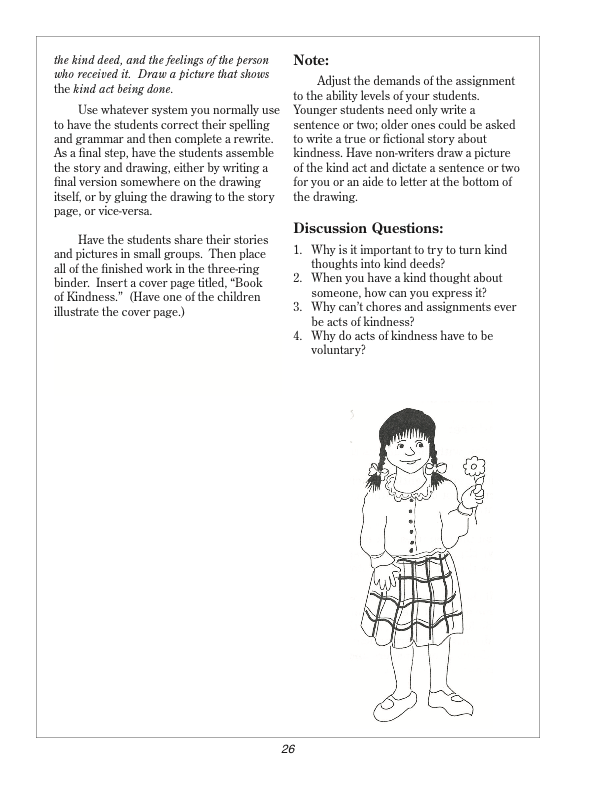Cooperation, support, and having fun together are some of the things we experience with our friends. Our network of friends is one of the most important areas in which we develop social awareness. Children learn skills for interacting with others through successful interaction with their peer group. And having friends to care for and rely on can help them cope effectively with life’s daily challenges.
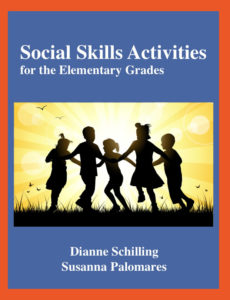
This week’s Sharing Circle and next week’s group activity both teach friendship skills and are designed to help students develop the ability to establish and maintain friendships.
Your Resources
Both this Sharing Circle and next week’s activity are taken from our book, Social Skills Activities for the Elementary Grades. Enjoy! The topic is, Something I Do to Keep a Friend.
 Here’s Your Monday Morning Sharing Circle. Enjoy!
Here’s Your Monday Morning Sharing Circle. Enjoy!
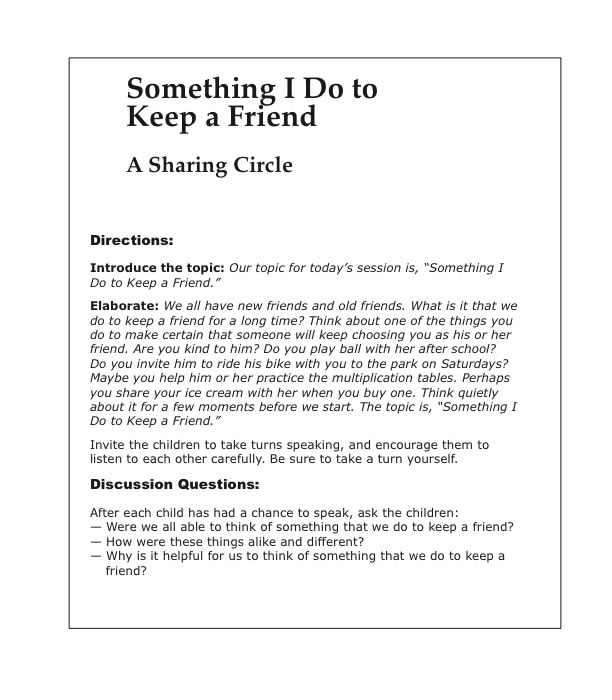
Do you want more information? • Leading a Sharing Circle • Sharing Circle Rules • Books and Resources • Free Activities • Subscribe
Here’s How It’s Done
Gather everyone into a circle. Explain the rules for sharing, and get agreement from everyone that they will follow the rules.
Sharing Circle Rules:
- Everyone gets a turn to share, including the leader.
- You can skip your turn if you wish.
- Listen to the person who is sharing.
- There are no interruptions, probing, put-downs, or gossip.
- Share the time equally.
After everyone has shared, who wants to share, ask the discussion questions.
You can check the book out HERE.
Just click HERE to open a fully reproducible PDF of this activity and experience sheet…
If you like our blog resources and would like to receive them regularly, please subscribe here or on our website at www.InnerchoicePublishing.com
If you are already a subscriber, I hope you find this activity valuable. Help us grow our blog by sharing these activities and encouraging others to join. Thank you.
Thanks so much for reading!
Susanna
Active Listening Skills for Managing Anger
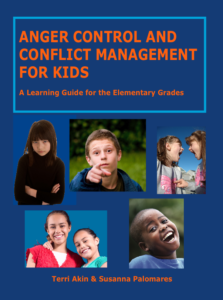
Active listening is a wonderful process for helping your students work through upsets to discover exactly what their feelings are.
When we listen actively to our students, two things happen at once. First, negative feelings lessen or disappear after they are expressed and acknowledged in a supportive, nonjudgmental manner, and second, we are modeling and thus teaching students the skill itself.
Active listening helps develop problem-solving skills. As you model and teach active listening, your students begin acquiring the skill, and they become increasingly able to talk through or articulate a problem clearly as opposed to having it just spinning in their heads because they are unable to express it. Through discussion, they are better able to work toward a solution. Active listening also facilitates the growth of a student’s ability to express himself or herself effectively.
A Tool for Today
Today’s lesson teaches the skills of Active Listening and applies them directly to lessening anger. It has been taken from Anger Control And Conflict Management, a learning guide for the elementary grades.
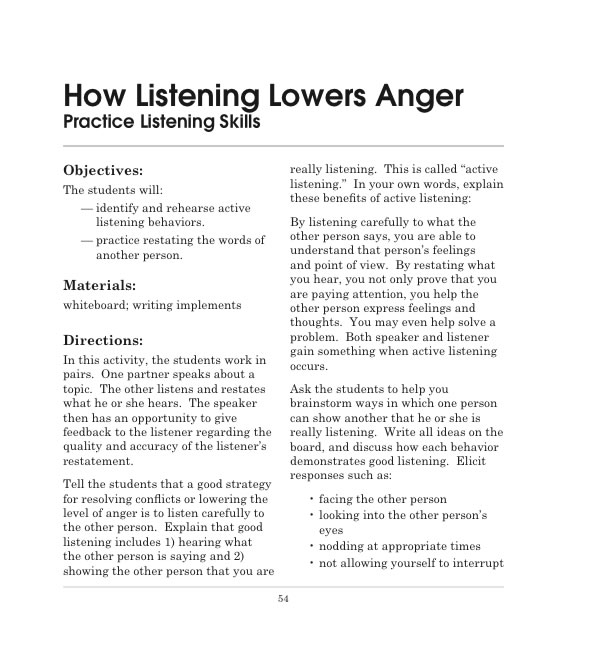
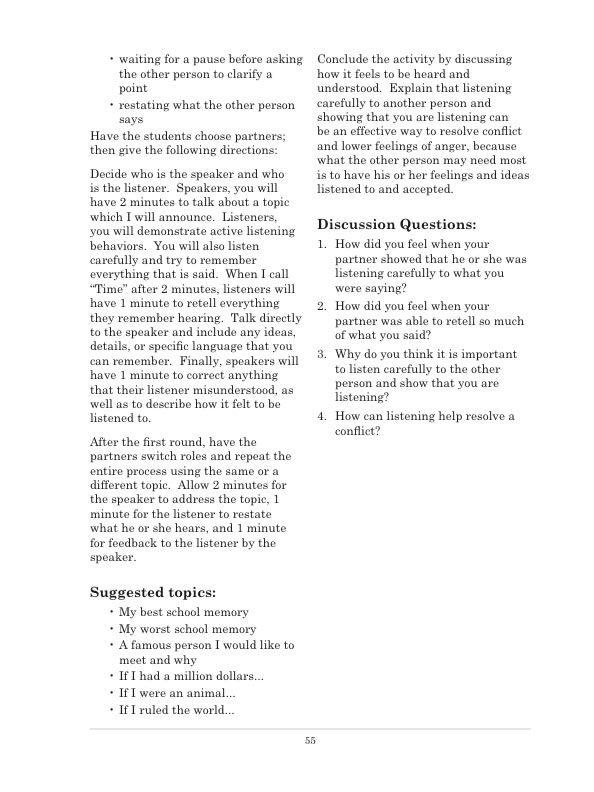
You can check the book out HERE.
Just click HERE to open a fully reproducible PDF of this activity and experience sheet…
If you like our blog resources and would like to receive them regularly, please subscribe here or on our website at www.InnerchoicePublishing.com
If you are already a subscriber, I hope you find this activity valuable. Help us grow our blog by sharing these activities and encouraging others to join. Thank you.
Thanks so much for reading!
Susanna
Awareness of Self and Others
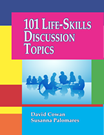
Awareness is a critical element in life-skill development. Aware people do not hide things from themselves. They are in touch with the inner world of their feelings and thoughts, and they are in control of their actions—and they understand that other people feel, think, and behave too. They are also in touch with the reality of the past, the possibilities of the future, and the certainty of the present. Awareness allows individuals to order their lives flexibly and effectively on a moment-to-moment basis. Awareness also allows us to connect with others and is fundamental to developing empathy.
Here’s a Sharing Circle That Focuses on the Nature of Awareness
This Sharing Circle topic comes from the activity book (Grades 4-12), 101 Life-Skills Discussion Topics. The topic is, A Favorite Place of Mine.
 Here’s Your Monday Morning Sharing Circle. Enjoy!
Here’s Your Monday Morning Sharing Circle. Enjoy!
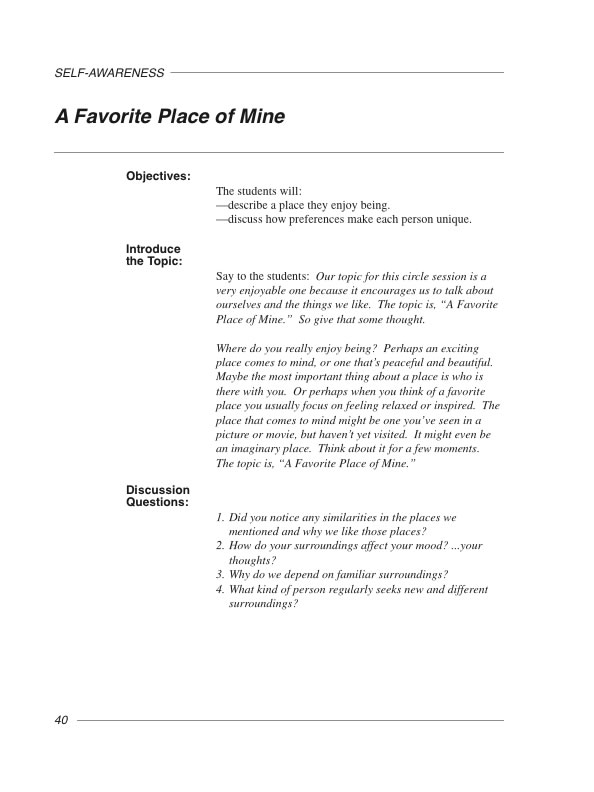
Do you want more information? • Leading a Sharing Circle • Sharing Circle Rules • Books and Resources • Free Activities • Subscribe
Here’s How It’s Done
Gather everyone into a circle. Explain the rules for sharing, and get agreement from everyone that they will follow the rules.
Sharing Circle Rules:
- Everyone gets a turn to share, including the leader.
- You can skip your turn if you wish.
- Listen to the person who is sharing.
- There are no interruptions, probing, put-downs, or gossip.
- Share the time equally.
After everyone has shared, who wants to share, ask the discussion questions. Get more in-depth information here.
Just click HERE to open a fully reproducible PDF of this Sharing Circle activity…
If you like our blog resources and would like to receive them regularly, please subscribe above or on our website at www.InnerchoicePublishing.com
If you are already a subscriber, I hope you find this activity valuable. Help us grow our blog by sharing these activities and encouraging others to join.
Thank you. Thanks so much for reading!
Susanna
Teaching Kindness
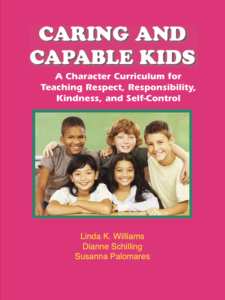
Today’s blog was inspired when I was sharing a meal the other day with a teacher friend. I asked how the new school year was starting out, and she shared that a challenge was getting the students to be kind to one another. I thought that providing a kindness activity today seemed the perfect response.
Kindness and Its Importance
Everyone intuitively knows the value of being kind, and teaching kindness and empathy to children. Observing or participating in acts of kindness sets a positive and caring tone for the day as well as reinforces important social-emotional skills. Modeling and reinforcing kindness makes it a practical and commonplace skill.
Many benefits have been reported in support of directly teaching kindness in schools including: Happy caring children; Greater sense of belonging and improved self-esteem; Improved health and less stress; increased feelings of gratitude; Better concentration; Reduced depression; Less bullying. In a 2016 report the US Department of Education said that research demonstrates the importance of kindness: “Students learn best when they feel safe, supported, challenged and accepted”. These are all elements of kindess.
Here’s Your Kindness Resource
This week’s activity helps students learn about the richness found in kind acts and behaviors and how they can be a benefit to all aspects of their lives. The activity, A Book of Kindness, comes from the resource guide, Caring and Capable Kids.
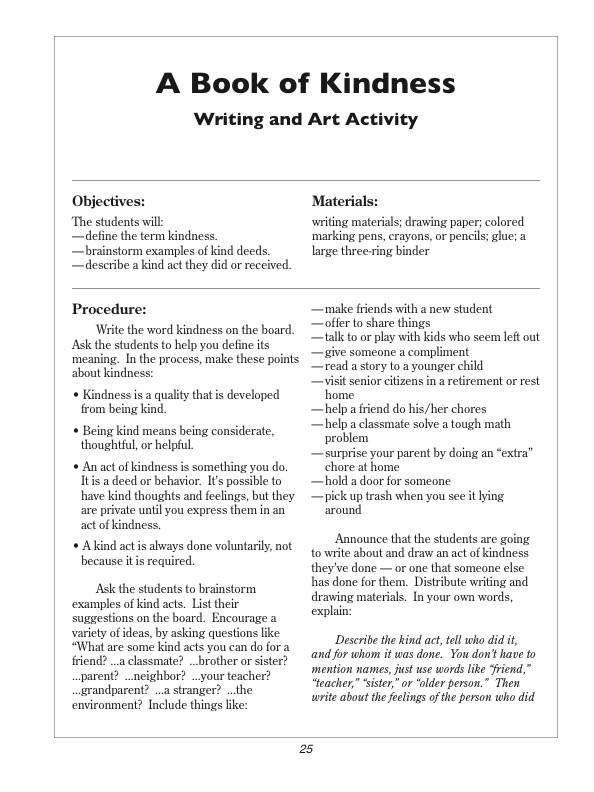
You can check the book out HERE.
Just click HERE to open a fully reproducible PDF of this activity and experience sheet…
If you like our blog resources and would like to receive them regularly, please subscribe here or on our website at www.InnerchoicePublishing.com
If you are already a subscriber, I hope you find this activity valuable. Help us grow our blog by sharing these activities and encouraging others to join. Thank you.
Thanks so much for reading!
Susanna
Activities for Teaching Respect
Teaching children about respect and developing positive relationships is one of the most important things we can do, especially in today’s increasingly disrespectful world.
What It Takes

Being intentional and specifically having your students engage in activities focussed on respect will help them to understand the importance of their respectful actions and to understanding the difference between respectful and disrespectful actions and words.
Respect means showing regard for the worth of someone or something. It includes respect for self (self-esteem), respect for others, and respect for the environment, including other life forms. All other varieties of respect are outgrowths of these three. Respecting someone’s property, for example, extends from respecting the owner of the property.
When we teach students to show respect, we prevent them from hurting what they ought to value. If we are completely successful, they will end up valuing that for which they have demonstrated respect.
Other ways to foster respect include:
- Create a democratic classroom environment, in which the rights of all students are respected. Show your own regard for every student, every day.
- Expect students to be polite and courteous. Consistently model the use of “please,” “thank you,” “excuse me,” etc.
- Really listen to the opinions and contributions of students. Make it a rule that students listen respectfully to each other.
- Show your appreciation for diversity. Create an environment in which individual differences are celebrated, and where all students feel included and interdependent.
- Teach students a simple decision-making process and encourage them to use it. Respect their ability to make decisions for themselves. Serve as their advisor and consultant.
- When students have difficulty understanding how their behavior affects others, suggest that they apply the classic test of reversibility. Ask them: Would you want to receive this kind of treatment?
Here’s a great activity for working on one important aspect of RESPECT:
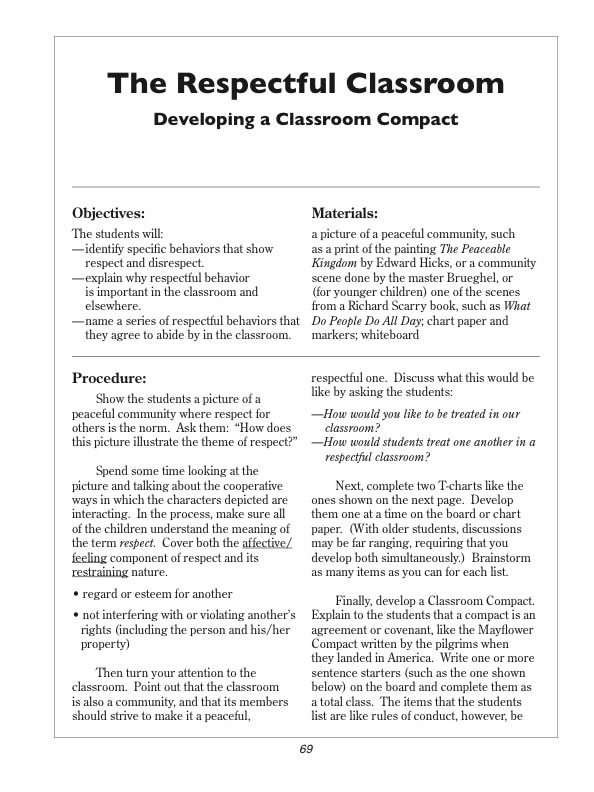
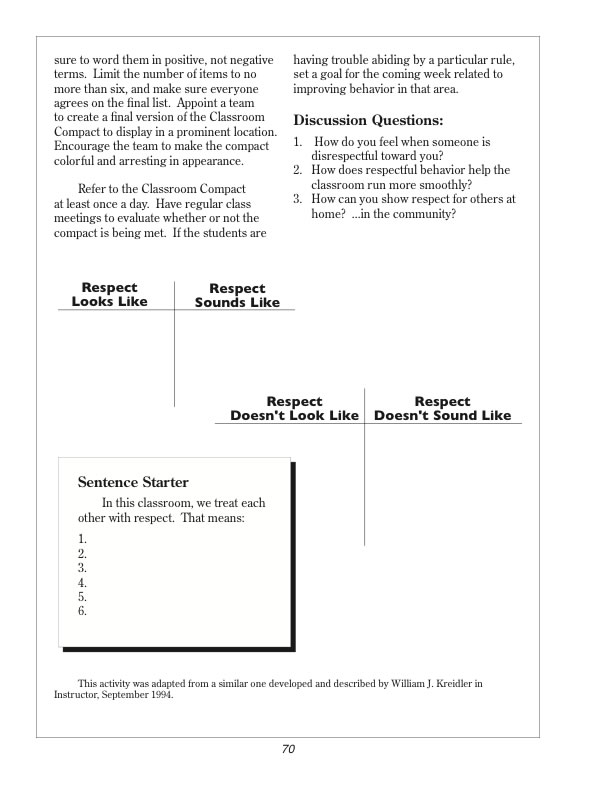
You can check the book out HERE.
If you like our blog resources and would like to receive them regularly, please subscribe here or on our website at www.InnerchoicePublishing.com
If you are already a subscriber, I hope you find this activity valuable. Help us grow our blog by sharing these activities and encouraging others to join. Thank you.
Thanks so much for reading!
Susanna
Back to School Ideas for Getting to Know Your Students
Getting a Good Start
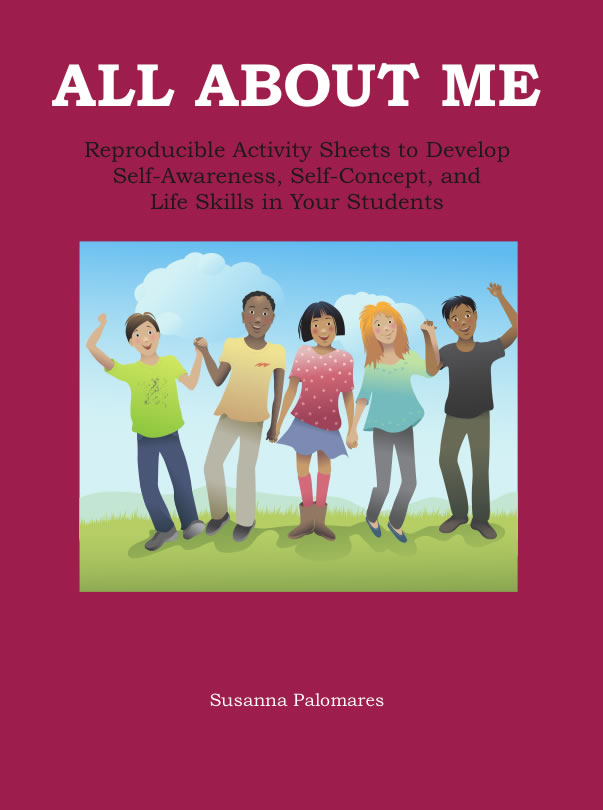
It’s your first day of school and you have a whole new group of students to get to know. By being interested in who they are as people, their interests, feelings, experiences, backgrounds etc., you’re making them feel welcome and setting a tone of caring, and by making them feel welcome and showing that you care you’re building positive relationships and winning them over right from the start. When you get to know your students on a personal level you’ll have a better understanding of group interactions, personal likes and dislikes, and motivating interests. This can help you plan lessons, organize groups, and diffuse potential problems.
Some Great Resources
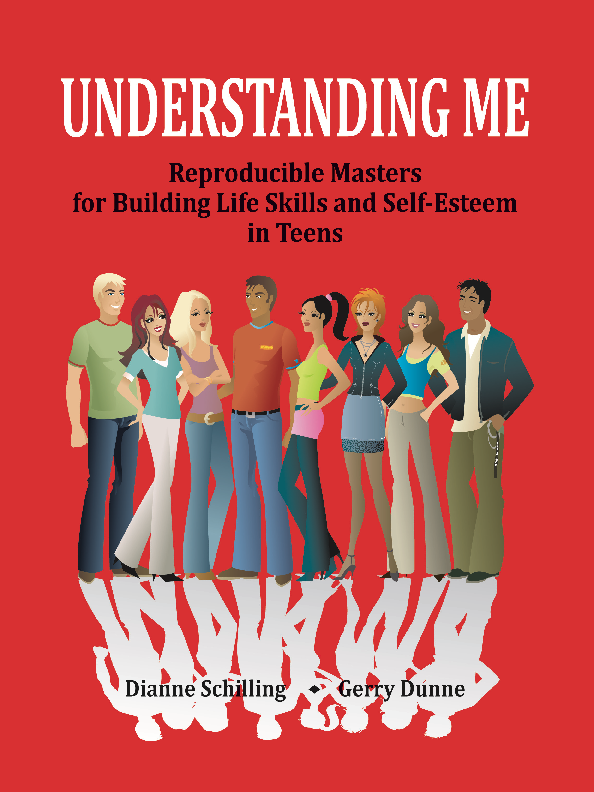
Here are a few quick activity sheets and some suggestions for follow up group interactions that help you to get to know your students and for them to get to know each other.
One Last Thought…
It’s important to remember that building positive relationships and maintaining a classroom of caring is about taking time on a regular basis to be in touch with the human side of your students. Check out more activities from the many books available from the Innerchoice Publishing website
Activities for the elementary grades – All About Me
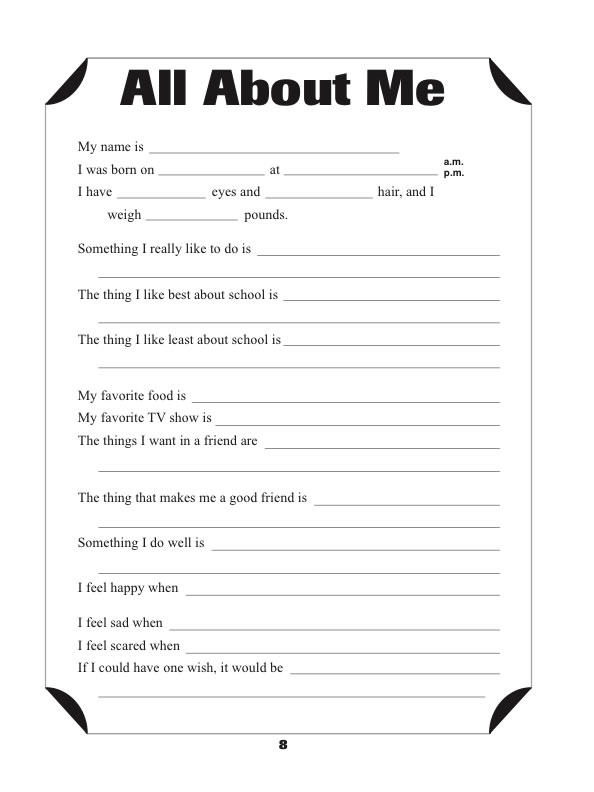
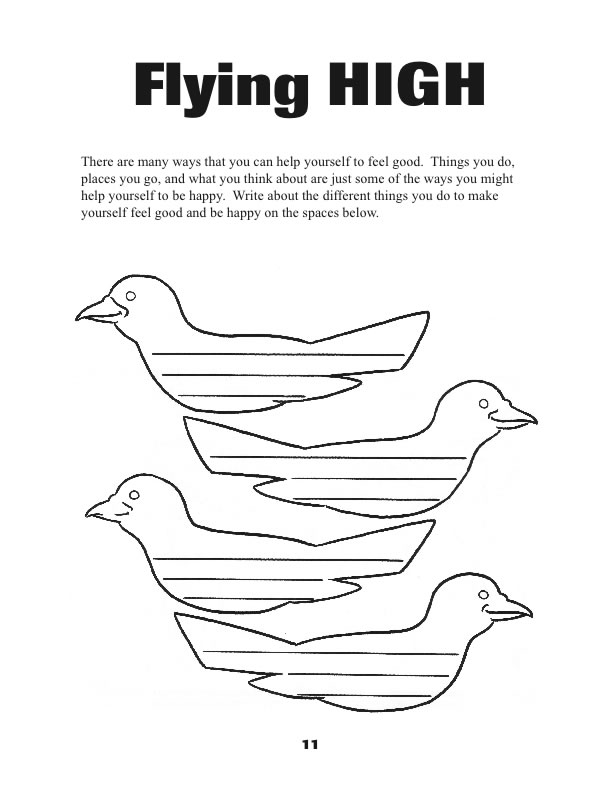
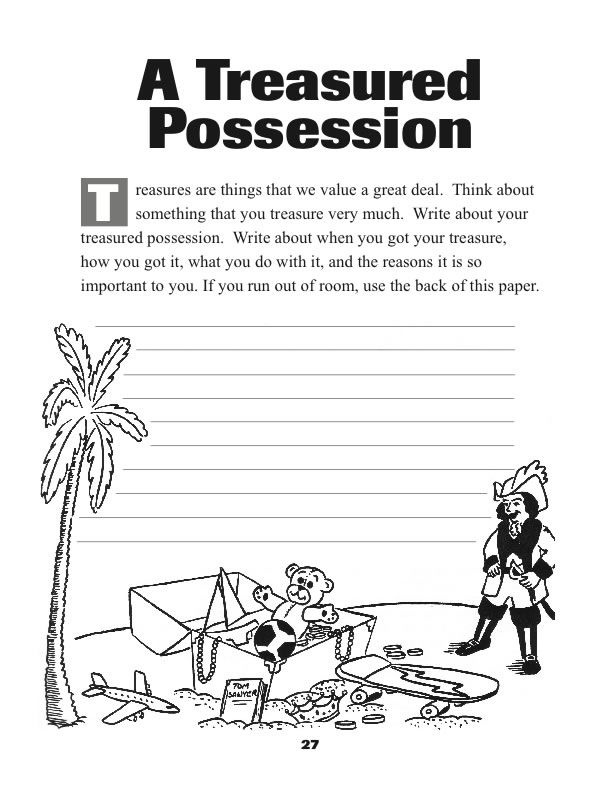
Activities for the secondary grades – Understanding Me
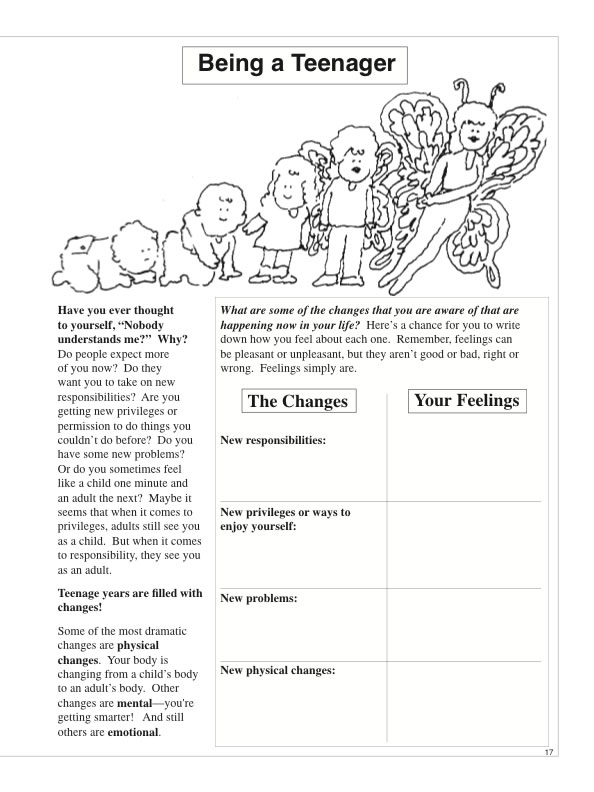
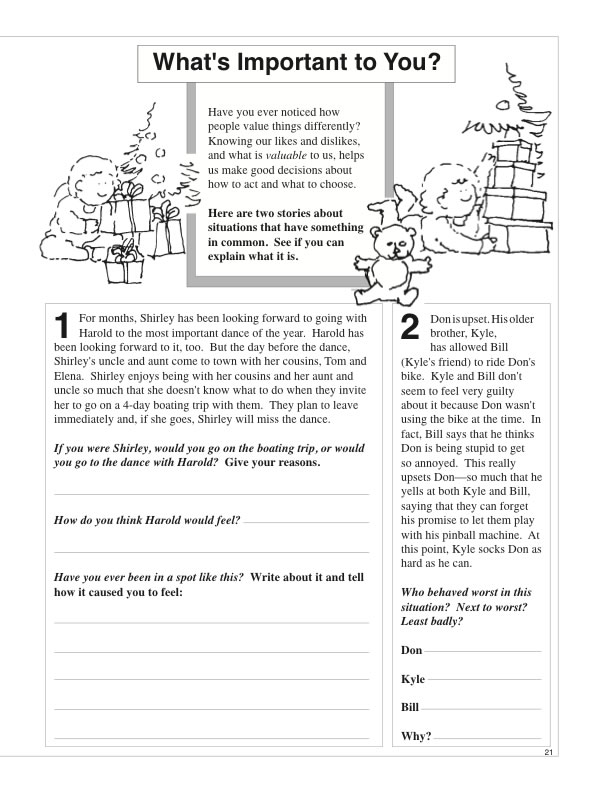
An Expression of Social-Emotional Learning
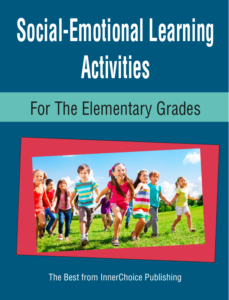
Never neglect or take for granted the emotional life of your students. Feelings, self-awareness, life skills, conflict management, self-esteem, and all of the other developmental areas now identified as social emotional learning are critically important. An impressive array of research from multiple fields supports the validity of time and energy spent by educators in these domains. Emotions are not unruly remnants of stone-age survival to be hushed and otherwise ignored while we develop cognitive skills. Emotions drive our behavior, shape our values, and predispose us to choose one course of action over others. Emotional and rational skills are equally important interdependent components of human intelligence.
This Sharing Circle topic comes from the elementary grades activity book, Social-Emotional Learning Activities For The Elementary Grades. The topic is, A Time I Showed Someone That I Care…
 Here’s Your Monday Morning Sharing Circle.
Here’s Your Monday Morning Sharing Circle.
Enjoy!

Do you want more information?
• Leading a Sharing Circle • Sharing Circle Rules
• Books and Resources • Free Activities • Subscribe
Here’s How It’s Done
Gather everyone into a circle.
Explain the rules for sharing, and get agreement from everyone that they will follow the rules.
Sharing Circle Rules:
• Everyone gets a turn to share, including the leader.
• You can skip your turn if you wish.
• Listen to the person who is sharing.
• There are no interruptions, probing, put-downs, or gossip.
• Share the time equally.
After everyone has shared, who wants to share, ask the discussion questions.
Get more in-depth information here.
Just click HERE to open a fully reproducible PDF of this Sharing Circle activity…
If you like our blog resources and would like to receive them regularly, please subscribe here or on our website at www.InnerchoicePublishing.com
Thanks so much for reading!
Susanna
PS: If a friend forwarded this to you, you can just sign up to get your own weekly Innerchoice Counselor Activit
A Lifetime Skill – Handling Peer Pressure
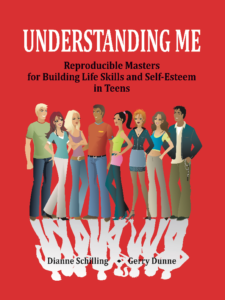
In virtually every area of living life skills are needed. Along with math, science, technology, history and English, students also need to be taught how to manage themselves, their time and activities. They need to know how to get along with others and to formulate goals and communicate their needs in a pro-social manner. Too often these critical life skills are not addressed in a direct fashion but their acquisition is simply left to chance. Students often don’t learn effective ways to deal with life issues. They have ideas but can’t express them clearly. They get into conflicts they don’t know how to resolve. They have hopes and dreams but can only drift through life.
The Current Reality
Often it’s the lack of skills and awarenesses that prevent many from becoming fully capable, contributing, happy members of society. School is the ideal places to directly teach life skills, both for their impact on the future and because life skills ensure the effective application of academic skills today.
Here’s a Resource and How to Use It
Understanding Me develops, maintains, and enhances critical life skills. Among the life skills addressed in these activity sheets are:
• decision making
• goal setting
• communication
• conflict management
• learning
• leadership
• time management
• responsibility
• assertiveness
• career choic
• trust
• friendship
• culture
• justice
In addition to your own enabling behaviors and the cultivation of an affirming classroom or counseling environment, you can assure a positive impact on the social-emotional development of your students by infusing these activities into your regular curriculum or counseling efforts. They represent one of many possible approaches and can be enlisted as supplements to other strategies you are currently using.
A Complimentary Activity
UNDERSTANDING ME is packed with meaningful information for teens to learn new ideas, attitudes, behaviors, perspectives, and skills while promoting self-awareness and self-esteem. These flexible worksheets can be used by anyone working with teens – teachers, counselors, youth group and after-school leaders, home-schoolers, and parents.
Today’s selected student activity is entitled Pressure!. What is Peer Pressure and what do you do with it?
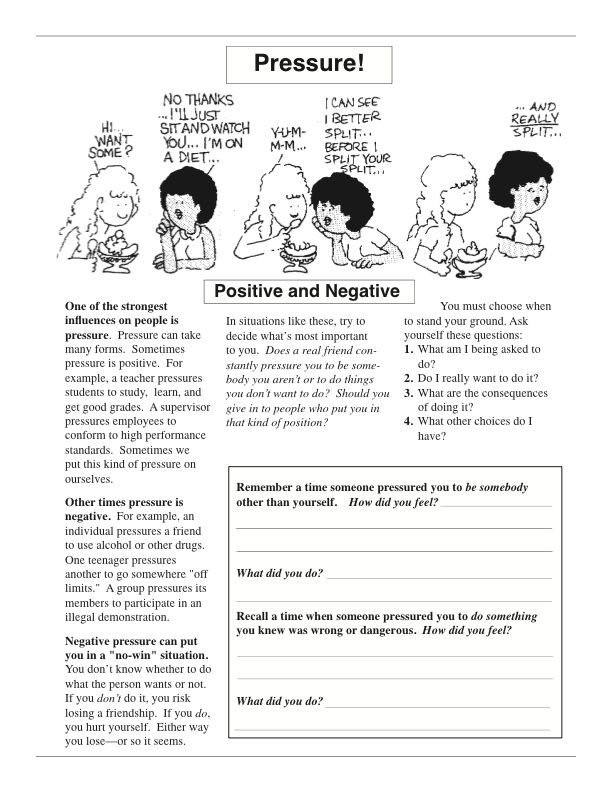
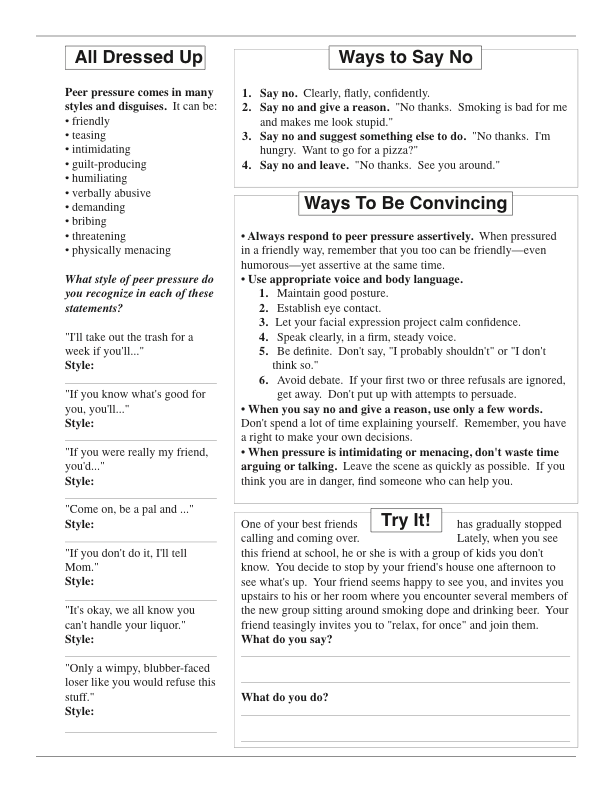
Use this activity now, and purchase the book to have a whole library of instantly usable social skills skills activities with which to engage your students.
You can check the book out HERE, and you can open a reproducible PDF of your student activity HERE.
If you like our blog resources and would like to receive them regularly, please subscribe here or on our website at www.InnerchoicePublishing.com
Thanks so much for reading!
Dianne Schilling & Gerry Dunne (Authors)
How Feelings Factor Into Conflict
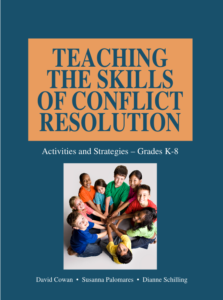
This Sharing Circle topic comes from the grades K-8 resource book, TEACHING THE SKILLS OF CONFLICT RESOLUTION.
Children who have learned to understand, accept, and control their feelings are not only less vulnerable to conflict, they are better equipped to deal constructively with conflict when it occurs. This Sharing Circle will allow students to better understand the connection between feelings and behavior. The topic for this Sharing Circle is, Something I Do That Makes Me Happy…
 Here’s Your Monday Morning Sharing Circle.
Here’s Your Monday Morning Sharing Circle.
Enjoy!
Something I Do That Makes Me Happy
Objectives:
The students will:
— identify something that they enjoy doing.
— state that all people can make themselves feel better.
Introduce the Topic:
Today we are going to think about things that we do to make ourselves feel good. The topic is, “Something I Do That Makes Me Happy.”
Do you know that you can make yourself feel happy? We all do things every day to help ourselves feel good. We give hugs to people we love, and that feels good. We sometimes sing or dance or tell jokes to make ourselves happy. We might make ourselves happy by playing a favorite game or reading a good book; by getting together with a close friend, playing with a pet, relaxing in front of T.V., or taking a walk. Close your eyes right now and think of one thing that you do to make yourself happy. Maybe you eat a favorite snack in the afternoon, or cuddle up with your cat. Perhaps you paint, or work on your computer. Take a few moments to think about it. The topic is, “Something I Do That Makes Me Happy.”
Discussion Questions:
1. Why is it important to know how to make yourself feel better?
2. What ideas did you hear that you’d like to try?
3. Who is in control of how you feel? Explain.
Do you want more information?
• Leading a Sharing Circle • Sharing Circle Rules
• Books and Resources • Free Activities • Subscribe
Here’s How It’s Done
Gather everyone into a circle.
Explain the rules for sharing, and get agreement from everyone that they will follow the rules.
Sharing Circle Rules:
• Everyone gets a turn to share, including the leader.
• You can skip your turn if you wish.
• Listen to the person who is sharing.
• There are no interruptions, probing, put-downs, or gossip.
• Share the time equally.
After everyone has shared, who wants to share, ask the discussion questions.
Get more in-depth information here.
Just click HERE to open a fully reproducible PDF of this Sharing Circle activity…
If you like our blog resources and would like to receive them regularly, please subscribe here or on our website at www.InnerchoicePublishing.com
Thanks so much for reading!
Susanna
PS: If a friend forwarded this to you, you can just sign up to get your own weekly Innerchoice Counselor Activity Blog.
Helping Children Deal Constructively with Anger and Conflict

Everyone gets angry, and everyone gets involved in conflict. Both are normal human experiences and often one leads to the other. Anger can lead to conflict, and conflict can lead to anger. They generally go together and it’s hard to tell which came first anger or conflict. Indeed, it’s often difficult to tell them apart. It’s only natural then that the teaching of the skills and awarenesses that lead to the ability to effectively managing these powerful emotional events be taught together. Children need to learn effective ways to control, express, and release their anger and strategies for dealing with the conflicts that inevitably arise in life.
The Reality
Because so many influences in their lives teach otherwise, powerful approaches and consistent intervention are needed to teach children positive, social and emotional skills. Practice makes perfect. Repeated exposure to positive alternatives, consistent reinforcement, and practice. Lots of practice!
A Complimentary Activity
Learning together in a classroom or counseling session makes it easier to internalize the skills, strategies, and methods of anger control and conflict management. We all are social beings designed by our long evolutionary history to learn our interactive behaviors with others. The activities in ANGER CONTROL AND CONFLICT MANAGEMENT FOR KIDS are designed to actively engage the students with each other in applying knowledge, solving problems, communicating, cooperating, and relating experiences to their own lives. They demonstrate to students the power of approaching anger and conflict with a win-win attitude, and to teach them a number of basic pro-social strategies for managing anger and resolving conflict. The experiential group activities included in this book examine the nature of anger and conflict as well as their causes, effects, and resolutions. A unique Sharing Circle and role-play process builds into the learning experience repeated opportunities for behavioral rehearsal.
Today’s selected group activity is Learning to Control My Anger.
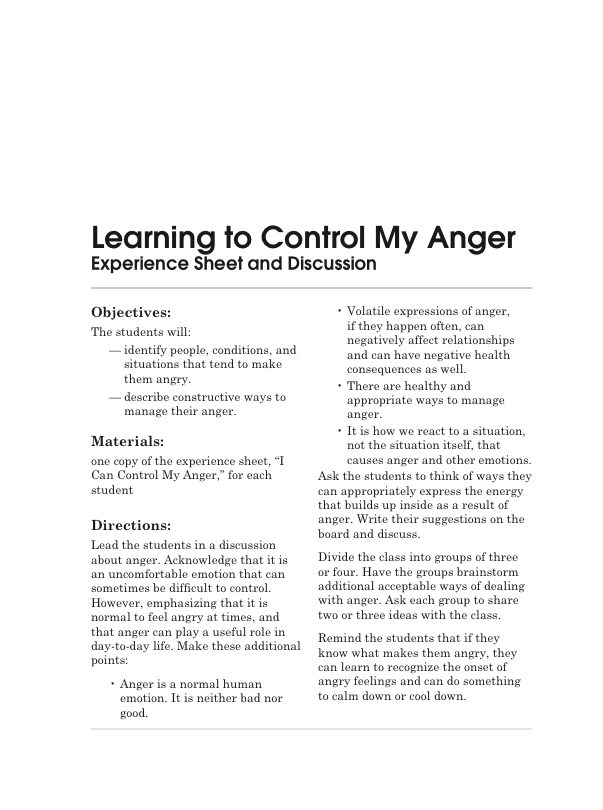
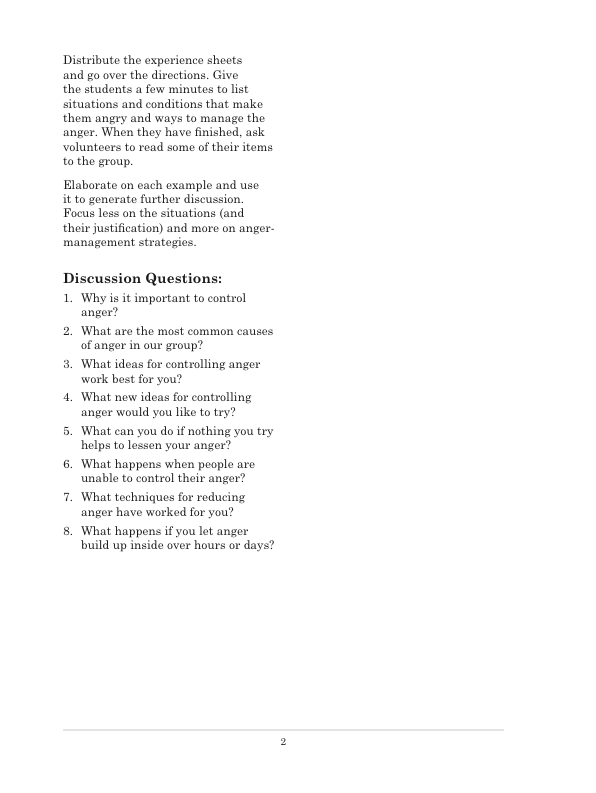
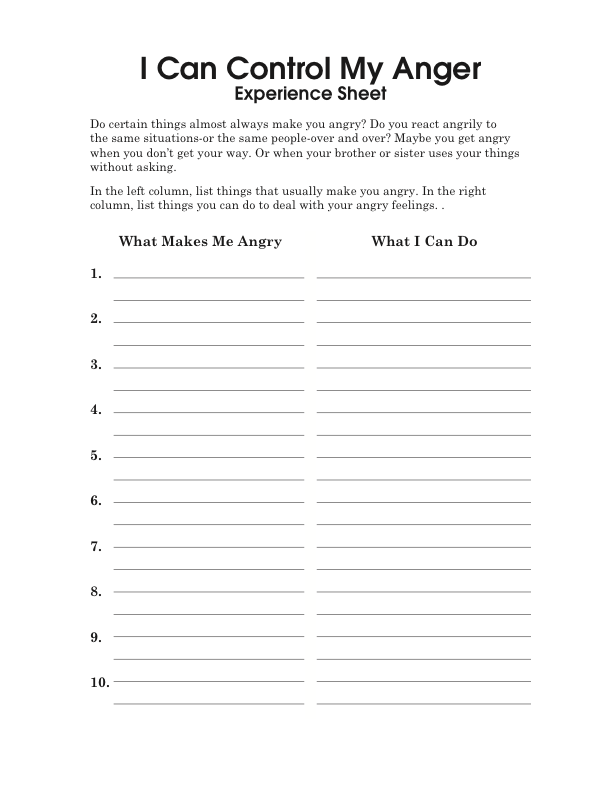
Use this activity now, and purchase the book to have a whole library of instantly usable social skills skills activities with which to engage your students.
You can check the book out HERE, and you can open a reproducible PDF of your student activity HERE.
If you like our blog resources and would like to receive them regularly, please subscribe here or on our website at www.InnerchoicePublishing.com
Thanks so much for reading!
Terri Akin & Susanna Palomares (Author)

